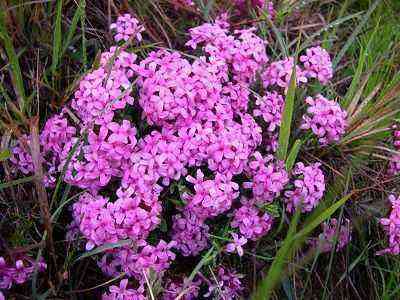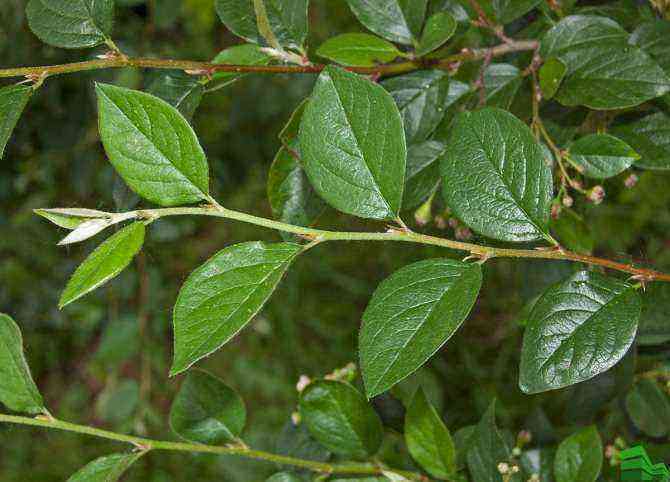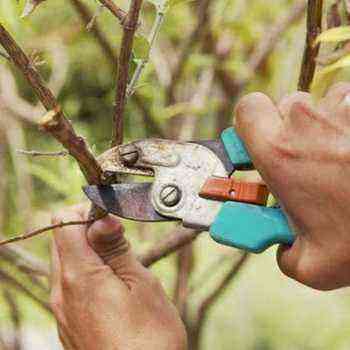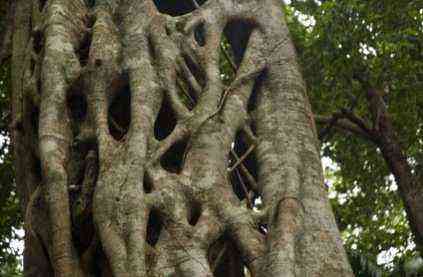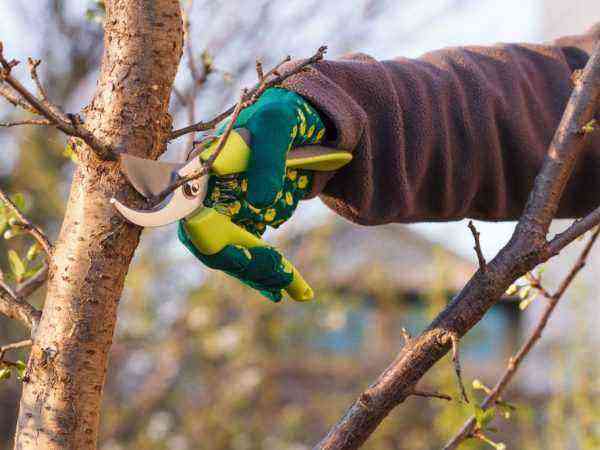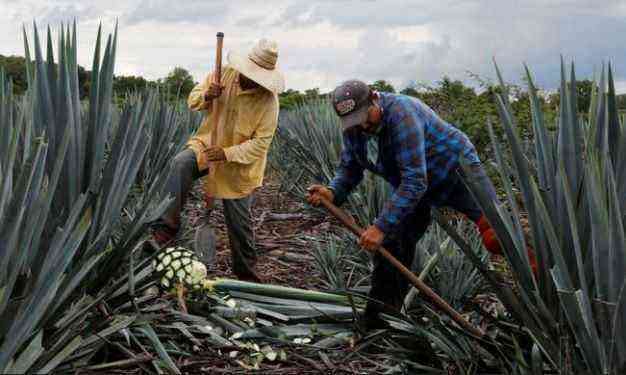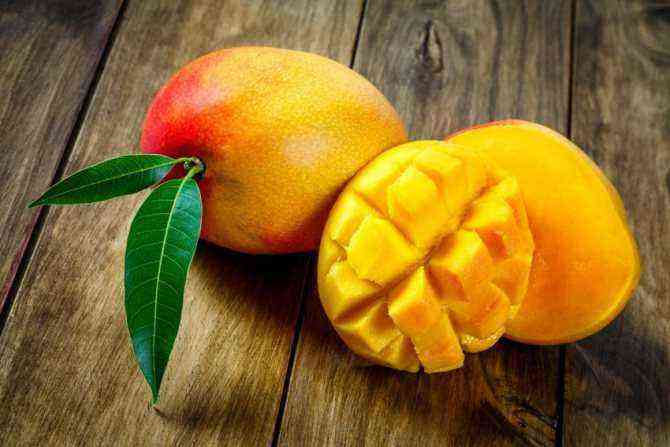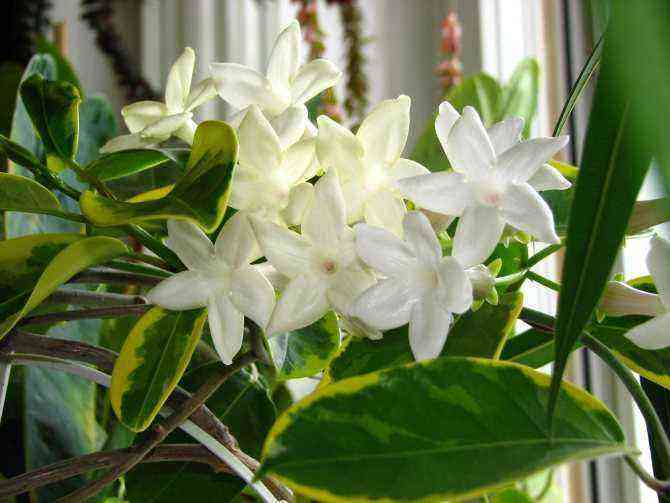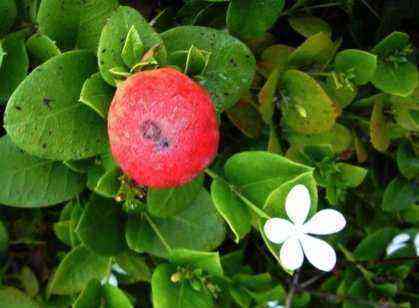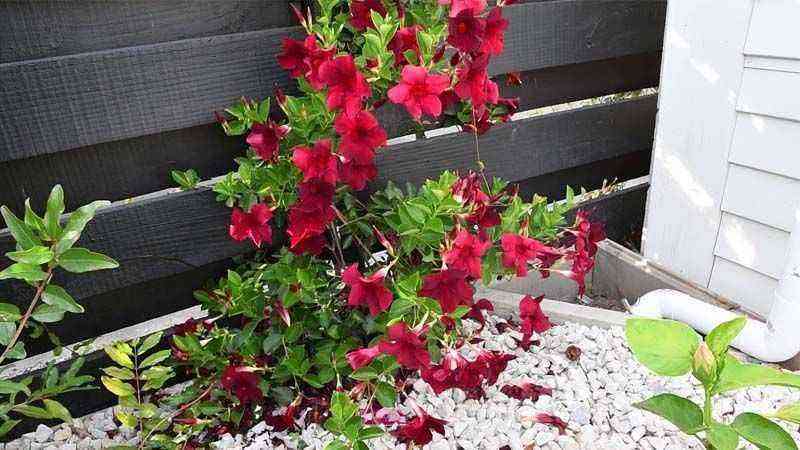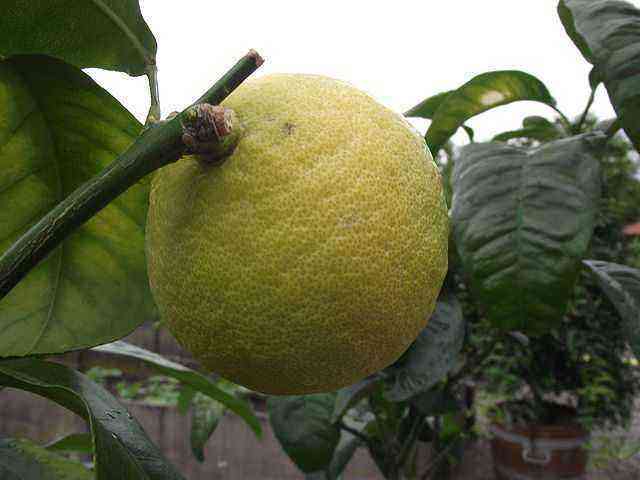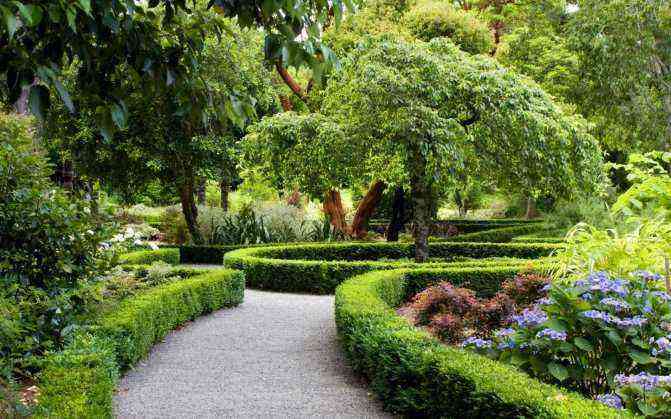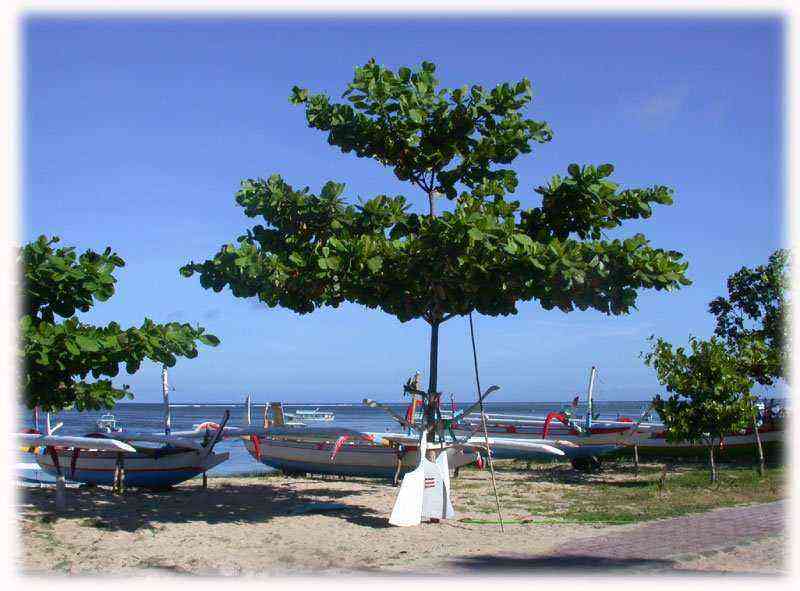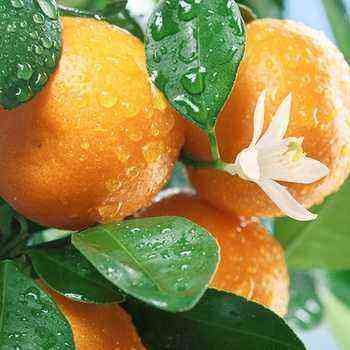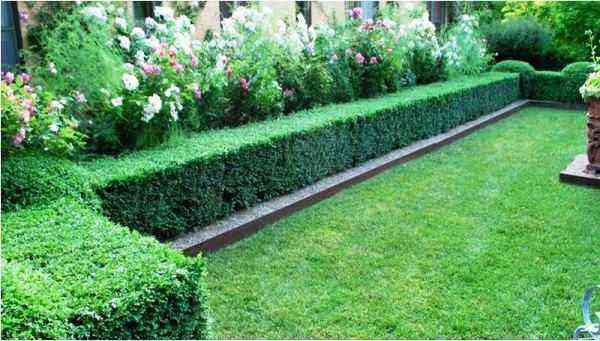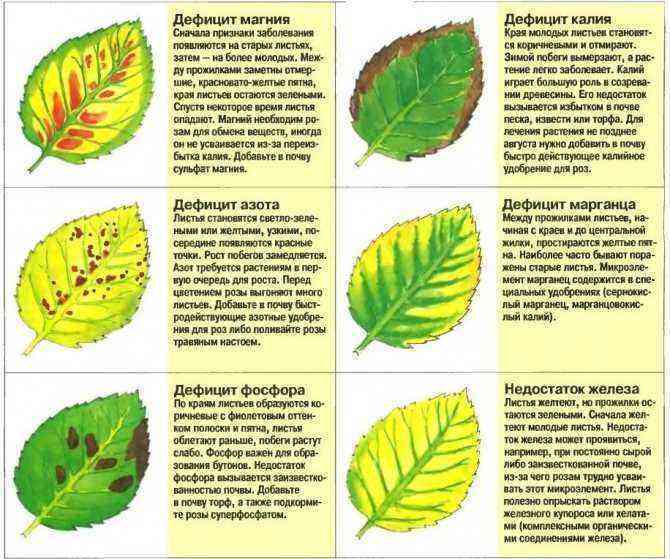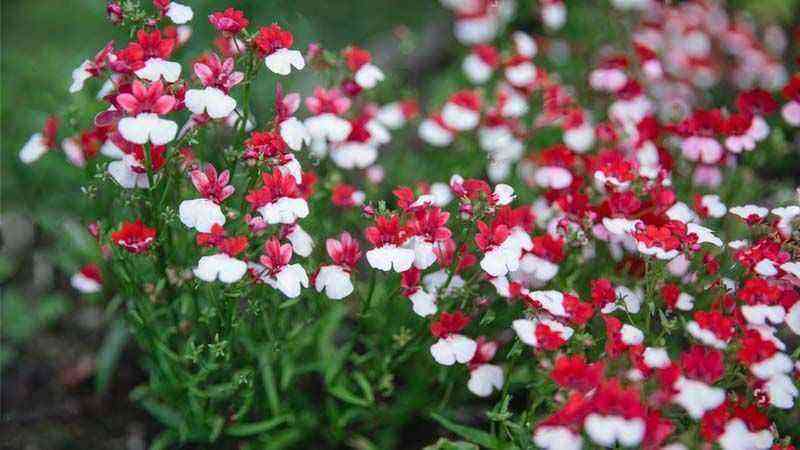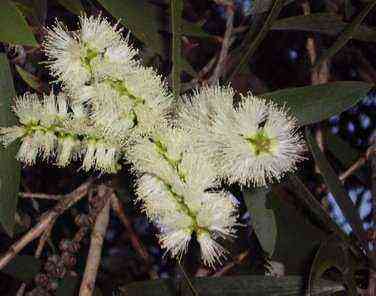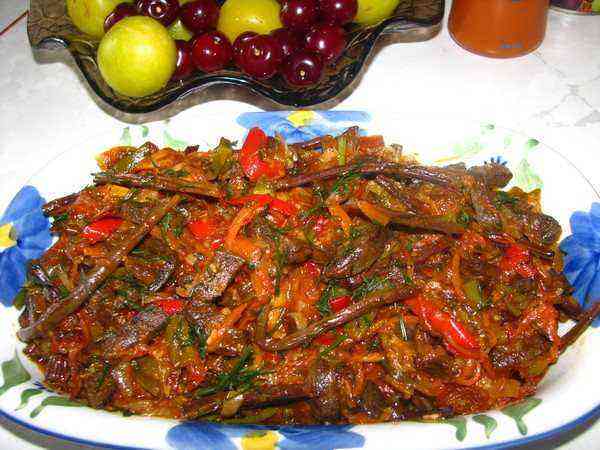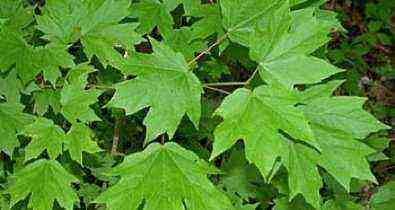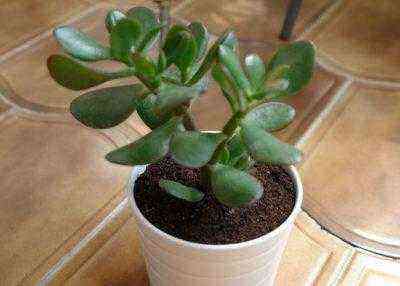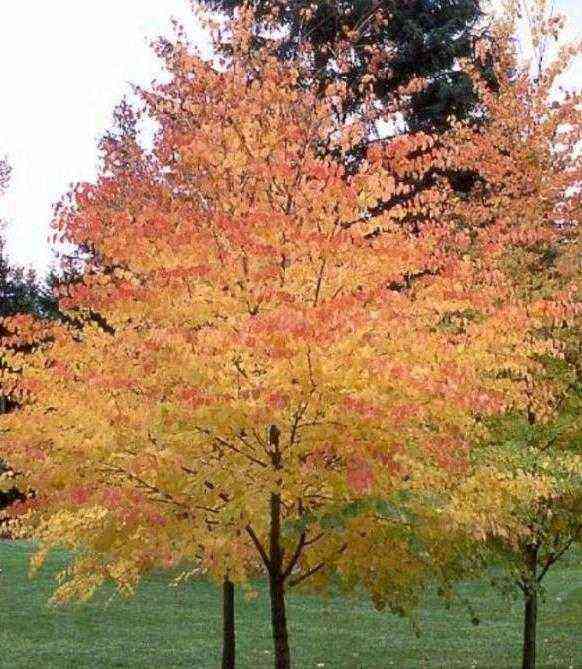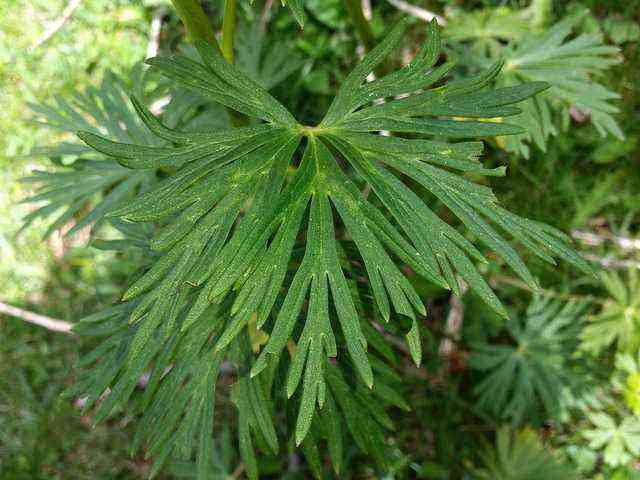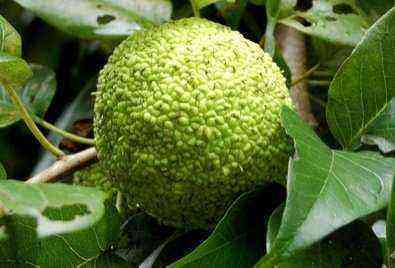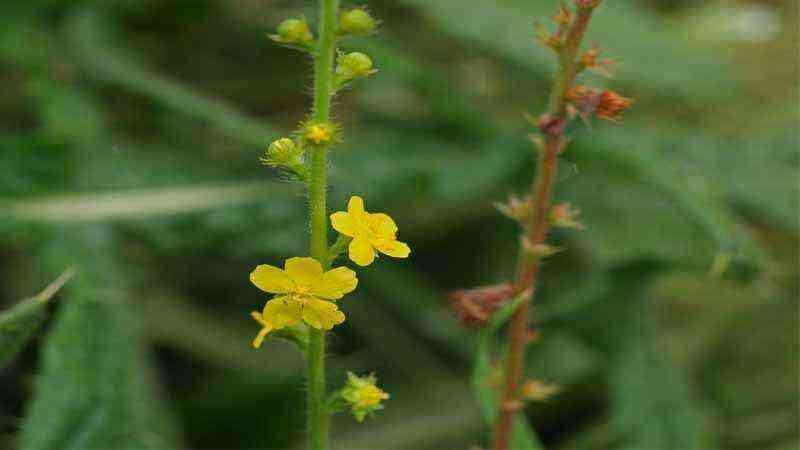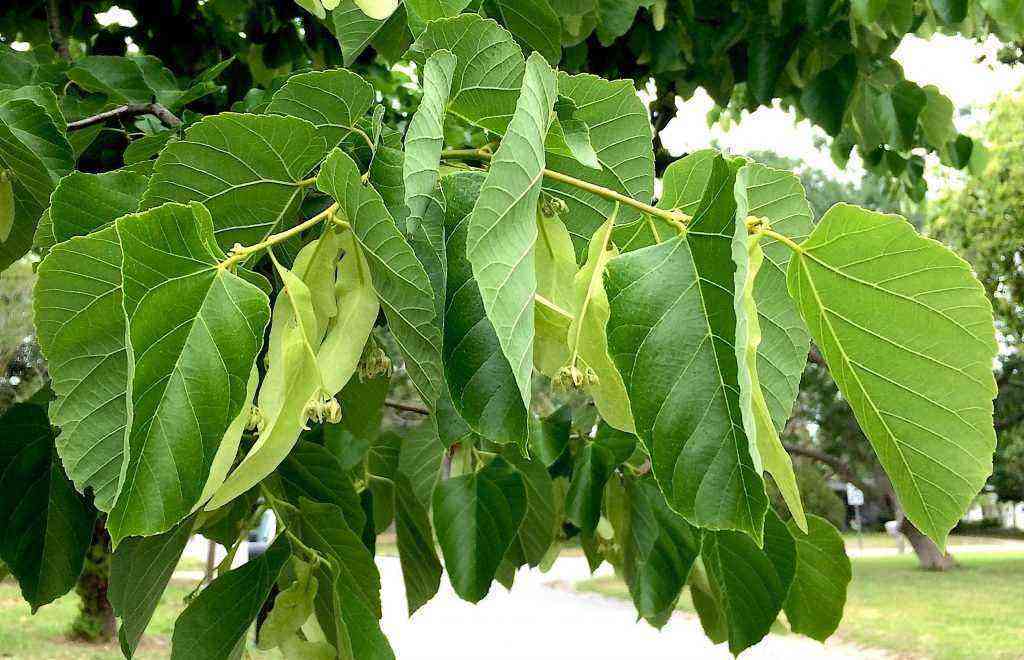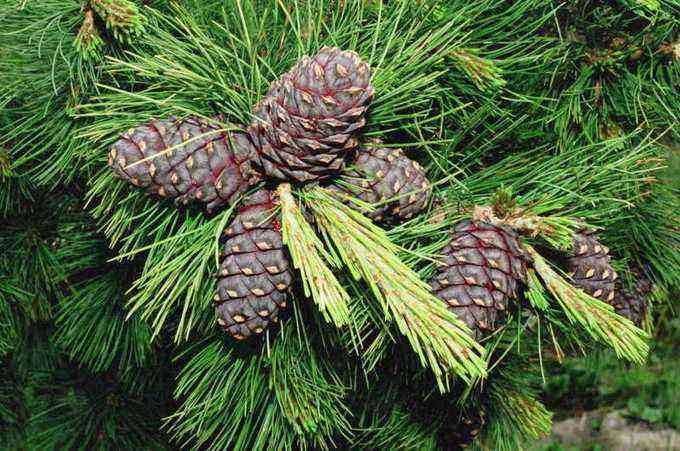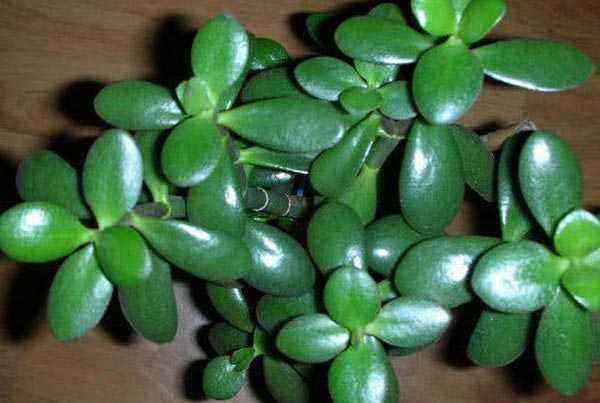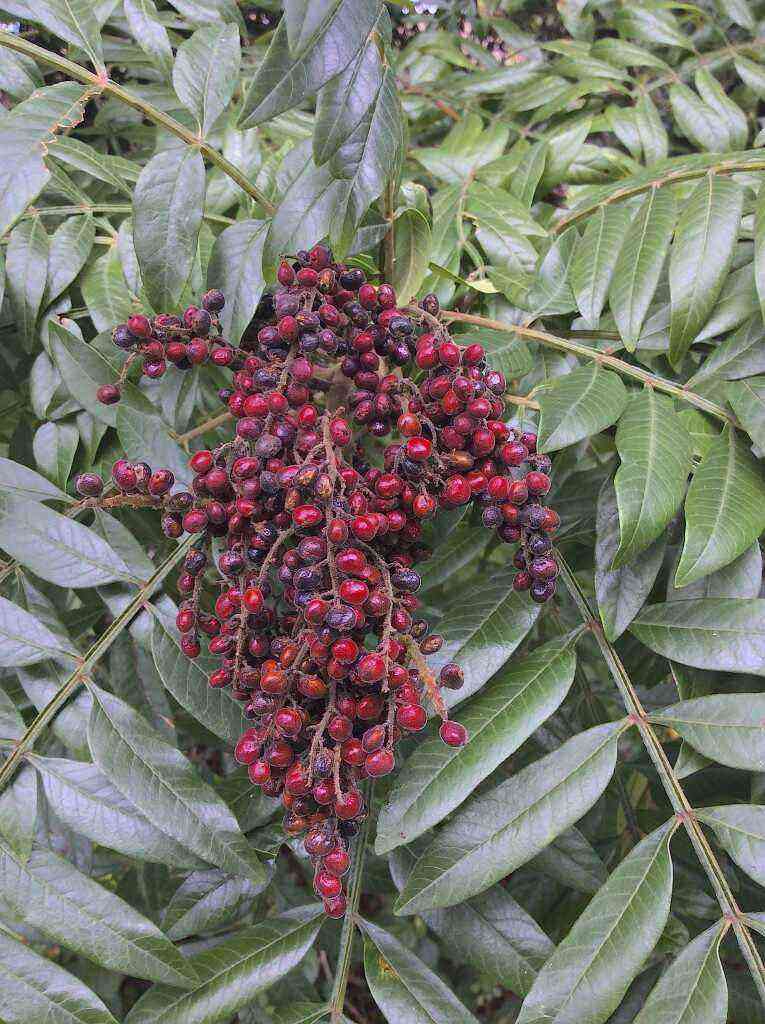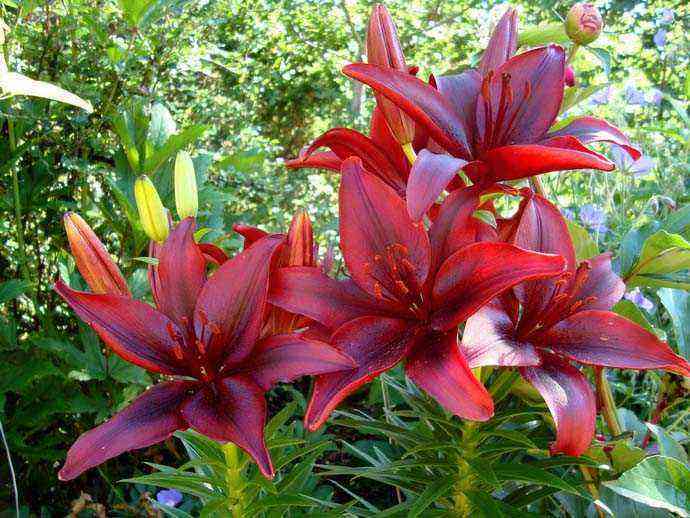Diseases and pests
This plant is very resistant to diseases and is not disturbed by pests.
The most common issue associated with fescue is the yellowing of the middle of the bush, which, as mentioned, indicates aging and the need for division and replanting.
Glacial fescue Titmouse is the most unpretentious perennial for an alpine slide
Do you think cereals grow only on agricultural land? But no – their decorative forms have long settled in gardens and are gaining more and more popularity. Glacial fescue Titmouse is one of the most beautiful varieties of plant, intended for growing on alpine slides. The almost perfect round shape of the bush makes it look like a shaggy pillow thanks to its dense, long foliage. Titmouse has an unpretentious character, which minimizes caring for her, but there are still some nuances of cultivation.
Characteristic features of the plant
Fescue belongs to the cereal family and is a herbaceous perennial. Grows in the form of a compact bush no more than 40 cm high, consisting of many narrow long leaves. The width of a rather rigid sheet plate does not exceed 1,5 cm, and this is at the base. Towards the top, the leaf narrows and ends almost with a needle. There are so many such needles that from a distance the bush resembles a pillow or a furry ball. Moreover, glacial fescue has leaves of almost the same length, due to which the “pillow” has an almost perfect round shape. Linear leaves are colored green-blue with a bluish tint characteristic of all fescue.
In the middle of summer, tall thin peduncles appear in the center of the bush, on which loose panicles about 6 cm long spike. At first, they are the same color as the foliage, and as they bloom, they acquire a brown color. By autumn, seeds ripen – small caryopses up to 5 mm long.
Not to be confused with glacial fescue – these are two different varieties! Gray fescue can be distinguished from the first by its softer foliage. In addition, the bush itself is smaller, and the color is dominated by a bluish color, without a hint of the characteristic “bluishness” of the Titmouse.
Glacial fescue Titmouse: planting and care
Grain propagates well by seeds, which can be sown in the spring, in the month of May, or before winter. It is convenient to plant in a nesting way, leaving at least 30 cm between the holes. 4-5 seeds are laid out in each nest – this will make fluffy pillows. If you wish, you can grow seedlings by sowing seeds at the end of March. Seedlings are transplanted into open ground at the end of May.
Glacial fescue must be planted in rocky places (in a rock garden). The black soil is too dense for her and the plant will not survive in it – the bushes will simply rot. The sunny side is preferable, and in partial shade, the color fades and its blue tint is lost.
Taking care of Titmouse is a pleasure, because you don’t need to do anything special. Fescue grows well without feeding, tolerates heat and hibernates well without shelter. The entire treatment consists of three procedures:
- watering on especially dry days;
- removal of dried leaves and inflorescences;
- transplant every 3 years.
Ornamental cereal propagates by dividing the bush. In the fourth year of life, its center begins to fall apart and dry out, so the plant should be rejuvenated. It is better to start dividing the bush in the spring, and then you will have the opportunity to create a whole clearing of fluffy pillows.
Successfully growing fescue from seed
Fescue is a beautiful herb with rough, needle-like leaves rolled into a tube. Growing fescue from seeds allows you to get a spectacular decoration of lawns thanks to decorative dense curtains that have an unusual appearance. The interesting texture of the leaves and the original shape of the plant itself are often used in landscape compositions, in rock gardens, carpet beds, pots and mixborders.
Variety of varieties and types
There are many varieties of this cereal plant. The most popular is gray fescue (also called Calle). It has leaves with a gray steel sheen, collected in dense clumps, and a spherical bush shape. Plant height – up to 0,6 meters. Growing gray fescue from seeds allows you to decorate even hard-to-reach and unfavorable for plants areas of the garden.
In addition to gray, the following varieties are known:
- Myra;
- glacial;
- Valissian;
- Siberian;
- amethyst and others.
Each of these plants has a distinct texture. Among them there are tall and short ones.
Growing fescue from seeds
Fescue is a perennial herb that is propagated by seeds and vegetatively. When dividing an adult bush, the separated parts can be transplanted to a new place. For this, a knife is not used, so as not to damage the plant and its roots. In this way, planting of fescue can be carried out both in spring and autumn.
How to grow fescue from seeds? There are several hundred seeds in 1 g of seeds. For example, gray fescue – about 950, panicle – about 800. Seeds are collected after ripening and drying of panicle inflorescences.
Traditional way of growing
Seeds are planted in the first half of March. Ceramic or plastic containers with low sides are suitable for germinating fescue.
The soil should be light, including:
- coarse sand;
- charcoal (crushed);
- deciduous and peaty land.
The substrate prepared for planting should be sprayed with a spray bottle, and not watered. This is necessary to prevent excessive moisture.
How to plant fescue seeds? Seeds prepared for planting are not deepened into the soil, but spread over the surface. Covering the container with glass or a transparent lid will help maintain adequate moisture. The lighting of the closed container should be good.
Germination and watering
The germination time of fescue depends on the conditions created. At room temperature, it is up to 20 days. After that, the container with the seedlings is rearranged in a well-lit, but cooler place. Care should be taken with watering, since if it is oversupplied, seedlings may lodge and soak the roots.
Transplanting into open ground
When the grass grows 30 mm, a pick is made. Plants can be planted in separate pots one at a time or several at a time.
The most suitable time for transplanting into open ground is the month of May. When planting, keep the distance between plants from 20 to 25 cm.
Growing fescue from seed in cold greenhouses
Another way to grow a plant from seed is in cold greenhouses. To do this, prepare the soil, loosen it and spread seeds on its surface. The top is moistened with a spray.
Germination takes place in 21 days if good lighting is organized. Sowing fescue seeds in a greenhouse is done at the end of March or later. The transfer of grown plants is carried out in stable warm weather.
Sowing seeds in open ground
Fescue works well for creating garden compositions. The seeds can be planted directly in open ground in a place intended for grass bumps. You can sow seeds in late March or early April, when the weather is right.
Before planting, the soil is prepared – loosened and slightly moistened. Seeds are planted, sprinkled with soil 20 mm. This approach allows you to prevent drying out of the soil, as well as the death of shoots. The distance between the individual holes should be about 20 cm.
Sowing is possible randomly into loose soil, followed by seeding with a rake.
Winter sowing
Another option for sowing seeds is before winter. To do this, choose well-lit areas that are not prone to flooding when snow melts and rains. Embedding in the ground is carried out in the fall, in October. The seeds should not be deeply buried.
Due to the peculiarities of winter sowing, it is recommended to use the number of seeds 1,5 times more than with other methods. This is due to the fact that not all seeds will sprout after winter. By the next fall, the sown grass will form into decorative lush hummocks.
Additionally, in winter, it is advisable to cover areas with sown seeds with snow.
Requirements for growing conditions
All fescue are sun-loving species. Warm sunny areas with good lighting are considered the most favorable for them, so they can be located on the south side of a building or a rock garden. Partial shade and drafts can become an obstacle when growing a plant that cannot show its unusual colors and texture in all its glory.
Fescue in planting and care is not demanding on the soil. It requires a light texture, friability and lack of moisture stagnation. Nutrient soils are not needed for fescue; dry, rocky soil with good drainage is the best option.
Almost all plant species have a high frost resistance, which allows it to tolerate winters well. After 2 or 3 years of planting, the clumps are prone to degeneration, which begins from the center of the hummock. Therefore, periodic renewal is necessary – re-planting with seeds or dividing the bushes.
In order for the cultivation of fescue from seeds to be successful, it is important when buying to choose species that are acclimatized to the conditions of the area.
Dense, dense clumps-spheres of fescue with narrow leaves – one of the most popular crops among ornamental cereals. When sowing sunny flower beds with this plant, you can get a beautiful, spectacular garden design that does not require complex maintenance.
Fescue Planting and care in the open field Growing from seeds Photo of varieties
Fescue in all its varieties is incredibly decorative precisely for its simplicity: thick thin needle-leaves form real “balls”, from which rare spikelets stick out on tall thin pedicels during flowering. It looks perky and impressive, especially if the cereals set off brighter flowers.
Gray shades are especially interesting due to their rarity. A slightly bluish tint effectively sets off any green plants and even bright flowers. It is impossible to refuse such an attractive plant, which, moreover, is very easy to care for.
Conditions for growing fescue
This decorative cereal loves the sun very much, so choose well-lit areas. Fans of rocky gardens will be especially delighted: the plant easily tolerates heat and lack of moisture, so feel free to plant fescue where sometimes it will be possible to “forget” about it.
It should be remembered that partial shade or shadow is perceived by the cereal sharply negatively, and gray-gray species can change color, having lost their decorative bluish tint.
Garden soil of any composition is suitable for fescue, but loose soil without moisture stagnation is preferable. For the full development of the plant, it is necessary that the soil structure is air and moisture permeable. It is easy to achieve the desired structure: if the soil is clayey, heavy, you need to add sand and a little loose organic matter (rotted compost), but no more than a third of a bucket per square meter. An excess of humus is perceived negatively by the plant. The best soil for a plant is rocky soil with good drainage, where fescue shows itself in all its glory.
The good cold hardiness of fescue makes it possible to grow it in areas with severe winters, without even covering it. When purchasing planting material, it is better to consult how successfully this species takes root in the conditions of your area and choose already tested varieties. This way you can protect yourself from any unpleasant surprises and get a variety that will feel great in the climatic conditions of your zone.
Transplant and rejuvenation
Fescue grows in one place for up to 2-3 years, after which the bush begins to degenerate. To rejuvenate the planting, you will have to dig up and divide the bushes, planting them less often. You should not be upset at the same time: fescue grows quickly and in the first year they reach their maximum decorative effect.
How to care for fescue
Lazy gardeners will be very happy to know that besides a good choice of location and soil, the plant does not need anything else. Yes, a transplant every three years. The rest of the worries about watering and feeding will be completely unnecessary.
A good result will be given by mulching the soil with decorative pebbles: weeds will not break through such mulch, condensation will form under it at night (here is watering for you), and in the heat there will be no intense evaporation of moisture.
To keep the bushes in a beautiful form, in the spring it is enough to remove the dead leaves by cutting them off or “combing out” with a rake. After flowering, it will not be superfluous to cut off dried panicles. That’s all the “wisdom” in caring for fescue.
Reproduction of fescue by dividing the bush
Transplanting, rejuvenating the bush and dividing it, propagating fescue – all this is a simple and accessible process for everyone. It is enough to pry a lump of earth under the fescue with a shovel and dig it out. With a sharp knife, they divide the bush into several parts, preserving the integrity of the earthen coma. The dead central part of the bush is thrown away.
New bushes are planted at a distance of 15-20 cm if you want to get a solid carpet, or less often (50-60 cm) so that the plants look apart.
You can start breeding fescue in early spring, for which, in the fall, mother plants dug out and transplanted into pots are brought into a cold room. They contain them at low positive temperatures, but provide good lighting. In the spring, the plants are separated and planted in a flower bed.
Growing fescue from seeds
How and when to sow fescue in the ground
It is not difficult to grow fescue from seeds. Sowing begins at the end of March, as soon as the soil is ripe. The seeds are large enough, so you can plant decorative fescue one seed at a distance of 10-15 cm. The planting depth is 2-3 cm. Lawn grasses are simply evenly scattered over the surface of the ground and covered with a rake. In the spring, there is enough moisture in the ground for the plants to germinate. But if you want to speed up the process, you can occasionally water the garden bed, however, avoiding overflow and the formation of an earthen crust.
When shoots appear, you need to remove the weeds and loosen the soil. Fescue grows and develops very quickly, so by the end of summer you will have full-fledged bushes.
How to grow fescue from seed for seedlings at home
Patient gardeners like to grow fescue through seedlings. To do this, at the end of February, seedling cups are prepared, filled with loose earth. They are planted in each glass for 1-2 seeds and lightly watered. You need to choose a place that is warm and well-lit, preferably south or east windows.
Remember that moisture stagnation is unacceptable, therefore, there must be drainage holes in the bottom of the cups, and excess water from the pan must be drained.
Plants germinate and develop quickly enough. Already in April, provided there is no frost, fescue seedlings are planted on a flower bed by transshipment. The distance between the holes is about 15 cm.
The best types of fescue with descriptions and photos
Blue or gray fescue Festuca glauca
The most popular species, which has earned the attention of gardeners for its unusual blue tint. Separately planted bushes, growing, form spherical curtains, reminiscent of fluffy pompons. The thin, sharp leaves are tough enough to hold their shape even in strong winds and rainfall. During flowering, rare paniculate inflorescences beautifully emphasize the round balls of leaves. the height of the bushes is from 30 to 60 cm, depending on the variety.
Fescue Mayra Festuca mairei
Gives a special romance to any flower garden, diluting colors and adding touches of naturalness, non-interference of man in the harmony of nature. Beautiful spheres, which have a somewhat “disheveled” appearance, are effectively combined with bright colors, for example, with echinacea.
Red meadow fescue Festuca rubra
The lawn grass, reaches a height of 60 cm, perfectly tolerates mowing. It has long been a pasture plant, and only recently, landscape designers have shown interest in it due to the unusual reddish shade of spike-shaped inflorescences.
Овсяница нитевидная Festuca filiformis
The incredibly thin needle-like leaves of this plant look beautiful next to other plants, being an expressive backdrop for the brighter representatives of the flora. Landscape designers are happy to use thread fescue in group plantings, adding elegance and unique charm to the compositions.
Glacial fescue Festuca glacialis
An excellent plant for rock gardens: with its tough needle-like leaves, the grass looks very impressive against the background of large decorative stones. The spherical compact shape is especially attractive for its complete appearance. Paniculate spikelets-inflorescences with a slight lilac hue turn the bush into a fantastic fireworks display.
Siberian fescue Festuca sibirica
A very frost-resistant perennial that can be grown in the harshest conditions. This fescue is planted as a lawn grass and as an ornamental grass in flower beds. The grass is low, up to 20 cm in height, paniculate spike-shaped inflorescences have a reddish tint. It grows even on poor rocky soils, it does without watering.
Valissa fescue or fescue Festuca valesiaca
It resembles Siberian, it grows very densely in the ground, forming strong sods. The density of green bristles is obtained through annual self-seeding, due to which dying old bushes are replaced by young ones. It drowns out any weeds, aggressively conquering territories. Very decorative during the flowering period: light gray panicles-inflorescences stand out effectively against the background of dark green needle-like leaves.
Reed fescue Festuca arundinacea
It is a highly resistant to trampling lawn grass. It has a well-developed, powerful root system, thanks to which it is able to extract moisture from the deep layers of the soil, even during dry periods. Retains an attractive appearance and does not fade even in extreme heat. Perfectly tolerates a haircut. Due to its many advantages, it has earned a special love among landscape designers.
Sheep fescue Festuca ovina
This is also a lawn grass characterized by intensive growth. The strong roots of fescue are so intertwining the top of the soil that it is not subject to erosion during the rainy season. The grass is resistant to trampling, tolerates frequent haircuts, quickly growing young greens.
Meadow fescue Festuca pratensis
High frost resistance, excellent endurance in any conditions have won high popularity of this lawn grass, which was included in various mixtures. Perfectly tolerates haircuts, quickly restores vegetative mass. Very decorative even in group plantings in a flower bed.
Blue or gray fescue in landscape design selection
The spherical shape of the bushes, the unusual metallic bluish tint give room for imagination: in any flower garden or rock garden, such a plant will become a real highlight. Fescue is planted randomly in group plantings or geometric patterns are formed in the form of rows, rectangles, semicircles, circles, triangles. Cereals are beautiful with any wildflowers or vibrant red, blue flowers.
Gray fescue is planted not only in flower beds: alternating meadows of various decorative grasses in the roadside area look quite original.
Growing and caring for gray fescue in the garden
Gray fescue is an unusual plant that is highly decorative and exotic. It is a compact hemispherical undersized bush of the original shape.
An interesting color, coupled with the plant’s endurance and unpretentiousness, allows him to be a favorite of landscape designers and people who want to arrange beautiful landscape compositions in their garden.
Gray fescue: description
Fescue is usually attributed to the Cereals family. Distribution in nature – temperate and subtropical zones. As artificial ornamental plantings, the plant “dispersed” in all climatic zones from northern to tropical. Of all types of fescue, it is the gray fescue that is most loved by garden designers, both professionals and amateurs. Thanks to the color of the leaves, the plant got its name, its variants: ash, blue fescue. Depending on weather conditions, the color may change, but the plant does not lose its decorative effect.
The plant is a lush bush with a height of 20 to 60 centimeters, the leaves are narrow, twisted into a tube. Modified in this way, they save water. Evergreen leaves form round, dense bushes. The roots are dense, small in size.
It blooms in early or mid-summer with inconspicuous light brown small flowers. The seeds formed after flowering are very small.
Fescue can grow for 5-10 years without replanting in one place. Divide and transplant curtains after five years; if the plant is dry or frozen, then earlier.
As a soil cover to protect it from drying out and weeds, fescue is ideal. Serving this purpose, it creates a unique decorative effect that lasts throughout the season.
There are many garden forms of fescue, they differ in foliage and color.
Growing conditions
Fescue is a big sun lover, almost all of them are cold-resistant and not afraid of frost. It is advisable to buy specimens bred in a given area and acclimatized to its conditions so that there are no unpleasant surprises after the winter season. The disadvantage is that the clumps degenerate rather quickly. After two or three years, the plant has to be divided, because the center of the sod dies off. The advantage is that it grows rather quickly, diverging in width, and already in the first year it acquires a worthy look, capable of decorating any part of the landscape with its sophistication.
sunlight
Fescue will be grateful for the hottest parts of the garden where it feels great. She is not afraid of high temperatures – this property is used by gardeners, settling her on alpine hills on the south side.
Soil for growing plants
This unusual plant does not require humus or other nutrients. The soil should be dry or fast drying, loose and breathable. In no case should there be stagnation of water. Drainage is often used additionally.
Fescue does not need nutritious soil, regular watering, and careful feeding. She will feel best on stony dry soil. Only in conditions of suitable soil and abundant sunlight will this plant thank its owner with a beautiful bluish color, abundant flowering and an exquisite unusual type of bush.
Landing terms and rules
As unassuming the fescue itself is, so is the process of planting it uncomplicated. Compliance with simple conditions will ensure success in growing a perennial.
Gray fescue reproduces mainly vegetatively; cultivation from seeds is also practiced.
Seed Reproduction
Seed propagation is used for species varieties. In this case, the seeds:
- sow in the ground;
- planted for seedlings;
- use plants obtained as a result of self-seeding.
Perennial seeds are harvested independently from the largest spikelets, which must be pre-dried.
If you decide to purchase seeds to plant funny “hedgehogs” in your garden, you should give preference to specialized outlets.
Seed material must be chosen from those varieties that are acclimatized to a given area and have a certain level of frost resistance.
Planting Seeds produced after warm weather in spring or before cold weather in autumn.
- Before planting, seeds that were collected on their own must be etched in a solution of potassium permanganate. If you have purchased seed from a reputable seller, especially if the packaging indicates pre-treatment, this is not necessary.
- You should plant 5-7 seeds in each hole, so that they quickly form a lush bump.
- The hole should not be too deep, maximum 5 centimeters.
- Having planted the seeds in the ground, you need to fill them with soil mixture, compact and water.
- The distance between the wells can be from 10 centimeters, depending on the desired result.
- After the first shoots appear, which will appear in a few weeks, semicircular lush bumps will form very soon.
Planting seeds for seedlings occurs in early March in order to plant stronger and grown bushes in the first half of May.
- The substrate should be light, breathable and permeable; sowing seeds, do not sprinkle them, but moisten them with a spray bottle.
- Covering with cellophane or glass, the container should be placed in a warm, bright place. Such a greenhouse will allow the seedlings to hatch in a few days.
- So that the seedlings do not thin out and do not die, the container will need to be rearranged to a place where it is cooler, however, it should be light.
- After the formation of two true leaves, the seedlings dive in groups into separate containers to obtain a lush bush.
- After the weather settles, most often this happens on the May holidays, the seedlings need to be planted in the ground.
Vegetative
Most often, they use the vegetative method of reproduction during transplantation and separation of overgrown bushes.
This should be done either in the spring before the start of sap circulation, or in the fall, when the plants are preparing for winter.
- Bushes that have grown a lot, and it’s time to plant them should be divided into parts.
- The resulting cuttings must be planted as independent plants.
- The core, which has become unusable and due to which the decorative appearance of the entire bush has been disturbed, is removed without using.
To give the plant additional winter hardiness, the mother bush should be dug out with a clod of earth, planted in a container and placed in a lighted but cold place, for example, a greenhouse. In this case, any dampness should be excluded in order to avoid the death of the bush.
At the beginning of spring, when it is time to plant fescue, the curtain is supposed to be divided, the cuttings should be planted in containers in a mixture of earth with humus and sand. They should be planted in the ground at the beginning of summer. Having passed a similar hardening, they will be much stronger and faster to gain green mass.
How to properly care for a plant in the garden
Gray fescue has many advantages: not only is it completely undemanding to soils, it perfectly tolerates both high temperatures and low temperatures, it almost does not need watering and feeding, and it is not difficult to preserve the decorative appearance of the bush.
Excess moisture is something that absolutely must not be allowed in the care of fescue. The roots begin to suffer: they rot and die, as a result of which the whole plant dies.
Watering the bushes should be very sparing, only if necessary: it is better to have little water than too much.
Fertilization rules
Fescue is completely undemanding to soils: it likes loamy, stony, sandy.
Only in case of extreme need for nutrition, when the plant began to grow and develop worse, it is permissible to additionally fertilize the soil in which it grows.
Fertilizers are applied organic or mineral, the dosage indicated in the instructions cannot be exceeded. An excess of nutrients can be detrimental to the ornamental perennial.
When spring comes, the cereal must be rid of worn-out leaves and dead fragments, which will improve the appearance of the ornamental plant. This can be done either manually or with a rake, which, due to the stiffness of the leaves, will not damage the aesthetic component of the fescue. After the bush has faded, you need to cut the flower stalks to maintain their appearance. In the case when it is necessary to collect seeds, the largest peduncles should be left until fully ripe.
Gray fescue is a real decoration of any garden, which is quite easy to grow even for a beginner. The plant is hardy: it withstands high temperatures with dignity, while being frost-resistant. Growing conditions and care are required to be minimal. The disadvantage is the impossibility of planting fescue in shaded areas, moreover, it does not tolerate dampness. If the plantings are large, caring for them can be quite laborious, due to the need to periodically separate and rejuvenate the curtains.

